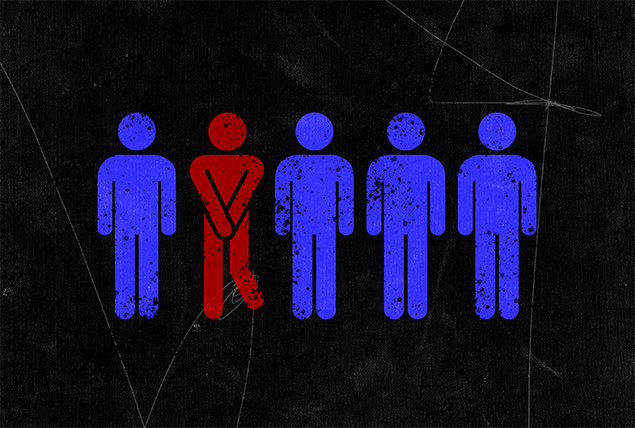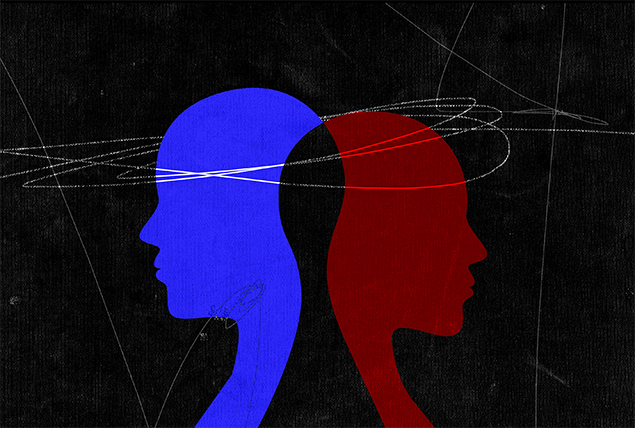
The State of Your Sexual Health
What do you think the definition of sexual health is? Does your mind immediately go to sexually transmitted infections (STIs)? Or perhaps you think about contraception. The term encompasses both, but sexual health is composed of so much more than those two topics.
Sexual health is an integral part of our overall health and well-being.
"Poor sexual health can have serious consequences—physically, emotionally and financially—for individuals and for society overall," said Susan Gilbert, M.P.A., the co-director of the National Coalition for Sexual Health (NCSH) in Washington, D.C.
With sexual health covering such a wide range of subjects, how do policy experts break it down and decide what's important? We will look at what defines sexual health, how we measure it and why it matters to public health.
Julia Bennett, M.P.H., the senior director of digital education and learning strategy at Planned Parenthood Federation of America in New York City, suggested that a person's sexual health and wellness includes, but isn't limited to, what's going on with their bodies.
Sexual health is a broad term that can include physical, mental, emotional and, for some people, spiritual health.
The NCSH pioneered a holistic and practical definition of sexual health: "Being sexually healthy means being able to enjoy a healthier body, a satisfying sexual life, positive relationships and peace of mind."
On a global level, however, the World Health Organization (WHO) has its own definition:
"[Sexual health is] a state of physical, emotional, mental and social well-being in relation to sexuality; it is not merely the absence of disease, dysfunction or infirmity. Sexual health requires a positive and respectful approach to sexuality and sexual relationships, as well as the possibility of having pleasurable and safe sexual experiences, free of coercion, discrimination and violence. For sexual health to be attained and maintained, the sexual rights of all persons must be respected, protected and fulfilled."
The benefits of good sexual health, according to Gilbert, go well beyond preventing STIs and unplanned pregnancies. There are also many emotional benefits, such as positive relationships and sex life.
"Good sexual health is important for people of all ages, whether you are in short-term, long-term or no relationships at all," she added. "People should also be free of fear, shame and guilt when it comes to their sexual health, sexuality, identities and relationships."
'Being sexually healthy means being able to enjoy a healthier body, a satisfying sexual life, positive relationships and peace of mind.'

On a physical level, poor sexual health is about much more than STIs, though they are a big part of it. And despite expanded knowledge surrounding them and better treatments, they continue to be too prevalent.
These statistics highlight the physical impacts of less-than-ideal sexual health in the United States:
- The number of STIs is high and rising: 1 in 5 people have an STI on any given day. In 2018, there were 26 million new cases of STIs diagnosed and nearly 68 million infections overall. Nearly half of all new STIs in the country occur among young people ages 15 to 24.
- Approximately 1.2 million people have HIV. About 13 percent don't know it and could benefit from HIV testing. While HIV infections have declined, an estimated 34,800 people were still diagnosed in 2019.
- Unplanned pregnancies are still common. In fact, 45 percent (or 2.8 million) of all pregnancies in 2011 were unintended. This percentage showed a decline from more than 51 percent in 2008.
- Sexual difficulties, such as low sexual desire or pain during sex, are also common, with at least 43 percent of women and 31 percent of men reporting at least one sexual concern.
- The rates of sexual and relationship violence can be alarming. Some 41 percent of women and 26 percent of men report they have experienced some form of intimate partner violence.
- Cervical cancer is prevalent. Each year, about 14,000 women are diagnosed with cervical cancer, and more than 4,300 die from it.

The emotional consequences of poor sexual health, including anxiety and depression, can be significant. Lost productivity due to these two mental health conditions—arising from all factors, not just sexual health concerns—costs the global economy $1 trillion annually, according to the Lancet Global Health.
Anxiety and depression can result from:
- A lack of respect, communication, satisfaction and equity within relationships
- A lack of self-confidence or self-esteem
- Experiencing STIs, unplanned pregnancies and problems with sexual function
- Sexual violence and trauma

Financially, poor sexual health can take a toll on the medical system and personal healthcare costs.
For the eight leading sexually transmitted diseases (STDs) alone—including chlamydia, gonorrhea, syphilis and trichomoniasis—the annual direct medical costs are about $16 billion, and that doesn't cover all STDs and STIs.
Public health focuses on the health of populations, and sexual and reproductive health are relevant to all populations, Bennett explained.
"There are striking health disparities throughout the healthcare system which are evident in sexual and reproductive health outcomes," she added. "Whether you're looking at the inequitable impact of abortion bans and restrictions, breast and cervical cancer mortality, STI rates, sexual violence, maternal mortality or access to sex education, certain groups of people tend to be at higher risk for these unacceptable outcomes."
Those groups include people who are Black, Indigenous, Hispanic, young and/or immigrants. People living in rural communities and people in low-income brackets also have higher-than-normal levels of these negative outcomes.
If these health disparities are not addressed with more equitable access to inclusive, culturally congruent healthcare and sex education, they will only get worse, Bennett said.
This point leads to the importance of government funding adequate sexual health services.
"Sexual healthcare is healthcare. Sexual health education is education. In supporting the development of future generations and uplifting marginalized communities, it is imperative that the whole person is considered," said Alison Macklin, M.S.W., the director of policy and advocacy for SIECUS: Sex Ed for Social Change in Denver.
Sexual health is part of the whole person. SIECUS (Sexuality Information and Education Council of the U.S.) and its partner organizations, Answer and Advocates for Youth, publish and update a document called "National Sex Education Standards." They claim that when sexual health education is provided according to the standards, it can have intersectional impacts far beyond the act of sex.
"Research shows that there is improved academic achievement and mental health outcomes. These positive outcomes will ultimately lead to a healthier country," Macklin explained. "A healthier country will lead to improved national outcomes."
The federal government has a central role to play in ensuring access to affordable, high-quality sexual healthcare, particularly for people with low incomes and people who are uninsured or underinsured.
'Sexual healthcare is healthcare. Sexual health education is education.'
The reality is that millions of people are falling through the cracks of the U.S. healthcare system, according to Mindy J. McGrath, the senior director of policy and communications at the National Family Planning & Reproductive Health Association (NFPRHA) in Washington, D.C.
For example, McGrath said the Title X family planning program was designed to prioritize the family planning and sexual health needs of people with low incomes. The providers in its network are critical partners in expanding access to care.
"However, the Title X program is chronically underfunded," she noted. "The STI epidemic in this country continues to worsen every year, and additional federal resources are needed to support Title X and other providers of sexual health in their provision of care."
Sexual and reproductive well-being can be at the heart of people achieving their own goals and those they have for their families, according to Rachel Fey, the vice president of policy and strategic partnerships at Power to Decide, a national nonprofit group based in Washington, D.C., that is dedicated to reproductive well-being.
"It enables people to attain their desired education and financial goals and helps them to plan their family as they want and need," she said. "If, as a government, your goal is to serve the people you represent, nothing could be closer to the heart of helping them achieve their dreams."
Discussing the inequities in access to high-quality sexual and reproductive healthcare in the United States is the biggest challenge we face regarding sexual health, Fey noted.
"It perpetuates so many other inequities, keeping people in poverty and denying them the ability to plan and space their families and live the healthy lives they deserve," she explained.
Bennett added that people in the U.S. also face several other sexual health challenges:
- Inadequate access to sex education. According to the 2020 School Health Profiles, fewer than half of high schools and less than one-fifth of middle schools teach all 20 topics recommended by the Centers for Disease Control and Prevention (CDC) as essential components of sex education. These topics include how HIV and other STIs are transmitted, how to prevent infections and critical skills for communication and decision-making. It's imperative that all people—especially young people—have access to sex education. Sex education gives young people age-appropriate, medically accurate information and answers to their questions about sex and relationships without being shamed or judged. It's been proved to positively impact young people's lives.
- Limited access to abortion care. Since the Supreme Court's June 2022 decision in Dobbs v. Jackson Women's Health Organization, which essentially overturned Roe v. Wade, many state legislatures have moved to ban or severely restrict access to abortion. Reproductive care providers and educators have seen an increase in questions from people of all genders who feel anxious, confused and concerned about managing their sexual and reproductive health.
- Misinformation and disinformation. Sex education can help young people build critical thinking and media literacy skills. It allows them to discern if the information they find online is true and reliable. It can also help them understand how the people who put misinformation or shaming content out into the world benefit from doing so and relate that to power, oppression, bodily autonomy and self-love.
- Rising rates of sexually transmitted infections. Rates of STIs have increased in recent years, possibly at much higher rates than the data shows because during the COVID-19 pandemic, some people lost access to STI testing through regular checkups, and public health resources were diverted away from STIs to deal with the pandemic.
There is still silence, stigma and shame surrounding sexual health and sexuality, Gilbert noted, which can result in a lack of communication between partners, family members, patients and healthcare providers.
"This can undermine essential conversations about safer sex, consent and healthcare services," she explained.
What are the implications of these barriers causing a distinct lack of access to and use of sexual health services across the United States?
Sexual health initiatives can be inadequate if they are not accessible, affordable or equitable, or they are of low quality, Gilbert said.
"By equitable, we mean that all communities—including those of different gender identities, sexual orientations, races and ethnicities, physical and intellectual abilities, and income and education levels—can access inclusive, culturally appropriate and bias-free care," she added.
Sexual health services recommended by the CDC and the U.S. Preventive Services Task Force (USPSTF) include the following:
- Contraceptives
- Counseling for STI prevention and contraceptive use
- HPV and hepatitis vaccines
- Screenings for STIs
- Testing for HIV
These services are recommended for individuals based on gender/anatomy, age and other factors, Gilbert noted. (See the NCSH Take Charge Guide to determine what's right for you.)
These essential services can help prevent cancer, infertility, pelvic pain, unintended and ectopic pregnancies, liver disease, fetal illnesses and other health conditions. If healthcare providers talk openly with patients about sexual health, they can also deliver services to help patients address sexual difficulties, which can help improve their sex lives and relationships.
"In a nutshell, sexual health services can prevent serious health problems, lifelong illnesses and even death," Gilbert said.
'Listening to those the policy is designed to impact is critical, as their voices are vital to creating holistic and intersectional policy that incorporates the voice of those it will most directly impact.'
When looking to make a policy change, Macklin said advocates and legislators should consider the following: Who does it impact, who conducts the research and what do experts in the field tell us?
From these three questions, policymakers can work to ensure they engage with the impacted citizens as the proposed policy is being created. Those impacted can include young people, educators, parents, child development experts, healthcare workers and historically marginalized individuals.
"Listening to those the policy is designed to impact is critical, as their voices are vital to creating holistic and intersectional policy that incorporates the voice of those it will most directly impact," Macklin explained.
She added that experts need to create policies based on facts and research of what are known to be the best practices and what are known to be most effective.
"There's no room for religion, ideology or discrimination in policymaking," Macklin said. "Implementing policy based on research and best practices ensures fiscal responsibility and adherence to previous legal precedent as it relates to anti-discrimination and separation of church and state."
In the next three installments of the State of Sexual Health series, we will expand on the questions explored here. What problems do inadequate sexual health services cause? How does access to sexual health services impact morbidity? What are the biggest challenges to our collective sexual health? How does a lack of sex education affect sexual health? What policy changes are needed to improve sexual health in the U.S.? How can an overtaxed healthcare system be improved? Where will funding come from and where should it be directed?
Each deep dive will assess these important questions and provide answers and solutions when possible.









